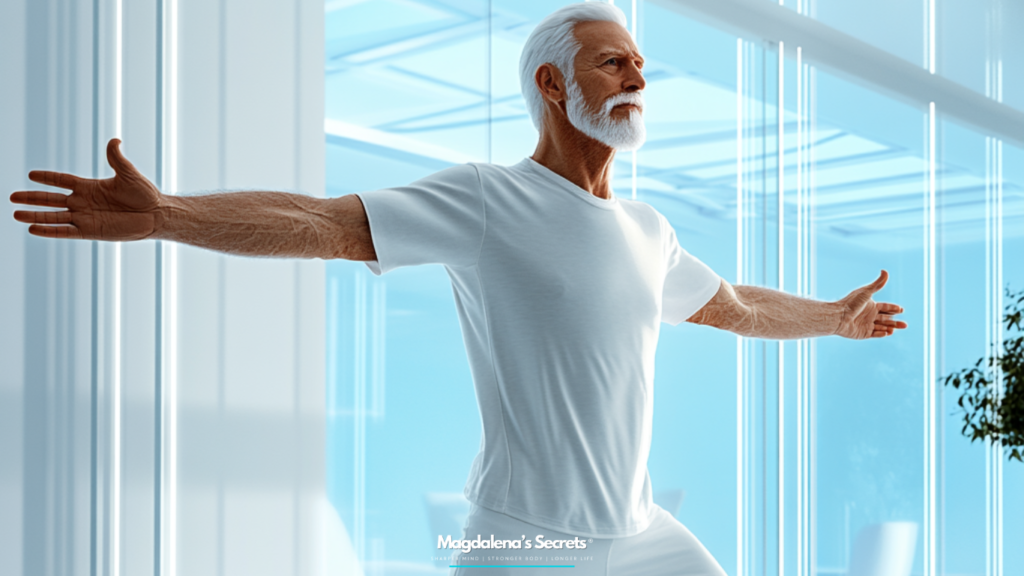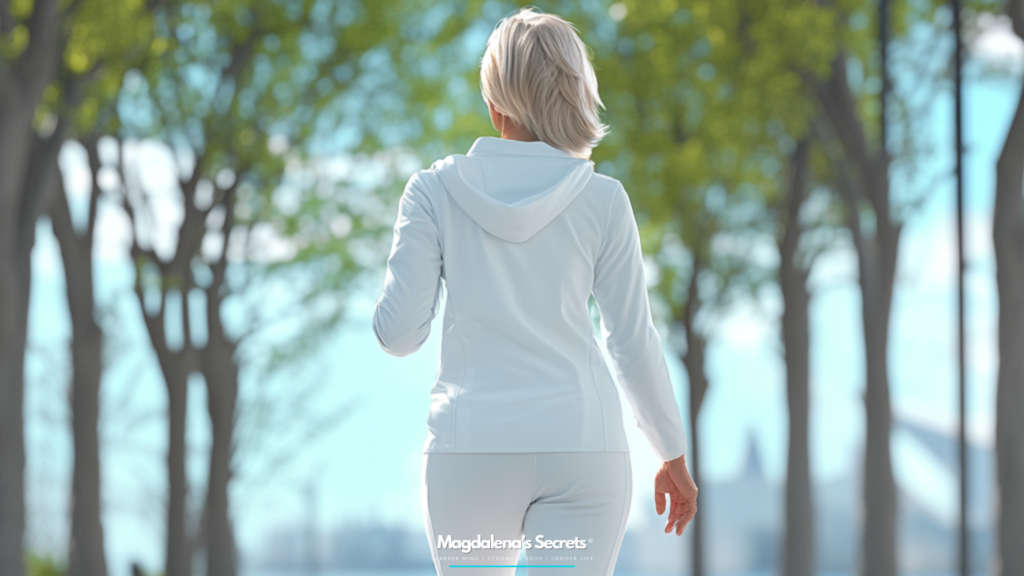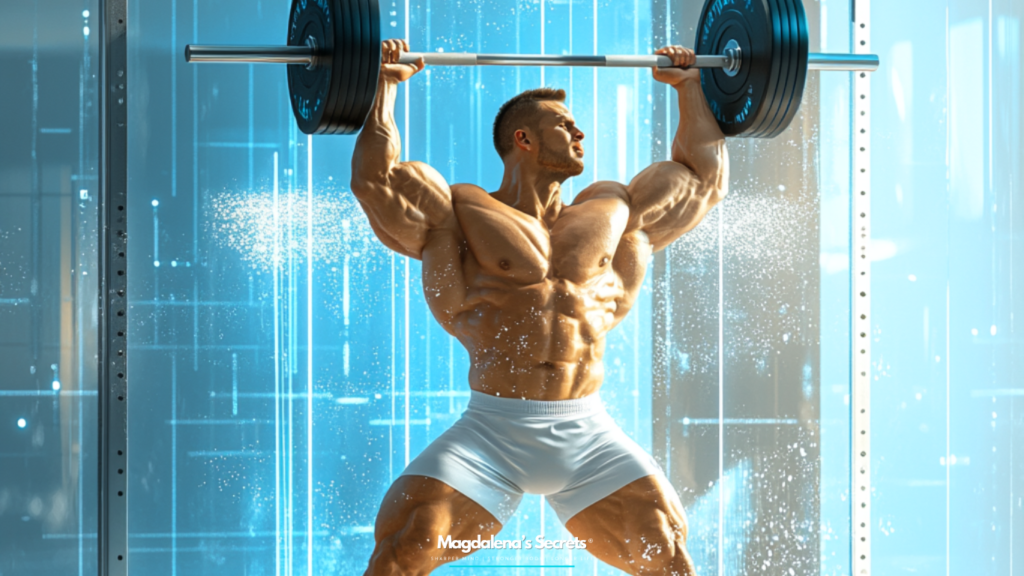Aging is inevitable—but how we age is largely within our control. While genetics play a role, one of the most powerful tools we have to extend both our lifespan and our healthspan is simple: movement.
Exercise isn’t just about looking fit—it’s about building a body and mind that can carry us through life with strength, energy, and independence. Whether you’re 30 or 70, your daily movement habits determine how well your brain functions, how resilient your bones remain, how sharp your memory stays—and even how many years you add to your life.
Let’s dive into why exercise is essential for aging well, and what science-backed strategies experts like Dr. Peter Attia and Dr. Stacy Sims recommend.
VO₂max: The Ultimate Lifespan Marker
According to Dr. Peter Attia, one of the most critical metrics for longevity is VO₂max, which measures your body’s ability to use oxygen during intense exercise. Simply put, it reflects your cardiorespiratory fitness—how well your heart, lungs, and muscles work together.
Why is this important? Because VO₂max is one of the strongest predictors of all-cause mortality. Higher VO₂max = lower risk of death.
The good news? You can improve it at any age with consistent cardio-focused training, especially zone 2 training (moderate-intensity aerobic exercise) and occasional high-intensity intervals.
Examples of VO₂max-friendly activities:
- Fast walking or uphill hiking
- Cycling
- Swimming
- Rowing
- Jogging at a steady pace
Even 30–45 minutes of zone 2 cardio, 3–4x per week, can bring dramatic improvements in energy, endurance, and longevity.
Muscle Is Your Aging Armor
Muscle isn’t just for bodybuilders—it’s your reserve bank account for aging.
Dr. Attia emphasizes that preserving (and even gaining) lean muscle mass is one of the most important things you can do for long-term health. As we age, we naturally lose muscle (a process called sarcopenia), which leads to weakness, frailty, and increased risk of falls or fractures.
More muscle = more mobility, stability, and strength to stay active and independent.
Dr. Stacy Sims, who specializes in female physiology and aging, also notes that strength training is vital, especially for women approaching midlife and beyond. Resistance training helps preserve bone density, balance hormones, and maintain a healthy metabolism.
Aim for:
- 2–4 sessions per week of resistance training
- Focus on compound movements: squats, deadlifts, push-ups, rows, and lunges
- Progressively increase weight or resistance over time
Muscle also improves insulin sensitivity, boosts metabolic rate, and protects joints and bones.
Your Heart Loves Movement
Cardiovascular disease remains the leading cause of death worldwide—but regular movement can change that story.
Exercise strengthens your heart muscle, lowers blood pressure, improves cholesterol levels, and enhances circulation. Cardio training makes your heart more efficient, meaning it doesn’t have to work as hard to pump blood.
Even light daily movement, like walking for 20–30 minutes, significantly reduces cardiovascular risk. The key is consistency—not perfection.
Your heart is designed to move. Sedentary living stiffens arteries and weakens circulation. Movement keeps the entire cardiovascular system flexible, strong, and youthful.
Exercise Builds a Better Brain
Want to stay sharp, creative, and mentally resilient as you age? Exercise is your secret weapon.
Regular physical activity improves blood flow to the brain, stimulates new brain cell growth, and boosts the release of BDNF (brain-derived neurotrophic factor)—a protein that acts like Miracle-Gro for your brain.
Exercise has been shown to:
- Improve memory and focus
- Lower the risk of Alzheimer’s and dementia
- Reduce symptoms of depression and anxiety
- Boost mood and emotional regulation
Even walking briskly for 30 minutes a day has cognitive benefits. For even greater effects, combine cardio with coordination-based activities like dancing, tennis, or martial arts.
Strong Bones, Balanced Hormones
As we age, bone density naturally declines, increasing the risk of osteoporosis and fractures. But exercise—especially weight-bearing and resistance movements—stimulates bone-building cells and helps preserve bone strength.
Dr. Stacy Sims emphasizes that postmenopausal women especially benefit from impact activities and strength training to keep bones strong and hormones balanced.
Try incorporating:
- Bodyweight exercises (squats, lunges, push-ups)
- Resistance bands or weights
- Low-impact plyometrics like jump rope or step-ups (if joints allow)
This kind of training also supports hormonal health, reducing the risk of insulin resistance, estrogen imbalances, and metabolic slowdown.
Move Daily—Even If It’s Just a Walk
You don’t need a gym membership or intense HIIT classes every day to reap the benefits. What matters most is daily movement—even gentle movement adds up over time.
Here are simple ways to stay active:
- Take a 10-minute walk after meals (great for glucose control!)
- Stretch or foam roll while watching TV
- Do air squats or calf raises while brushing your teeth
- Take the stairs instead of the elevator
- Use a standing desk or take frequent walk breaks
Consistency beats intensity. What you do every day matters more than what you do once in a while.
Final Thoughts: Train for the Life You Want
Aging well isn’t about avoiding wrinkles—it’s about staying mobile, strong, and mentally sharp for as long as possible. Exercise is the most powerful, free, and accessible tool we have to extend our healthspan.
• Boost your VO₂max with regular cardio
• Build and maintain muscle through resistance training
• Protect your heart, brain, bones, and hormones
• Move daily—because your body was designed to move
Remember: the goal isn’t perfection, it’s progress and preservation. Every workout, every step, and every lift adds up to more life in your years—and more years in your life.




